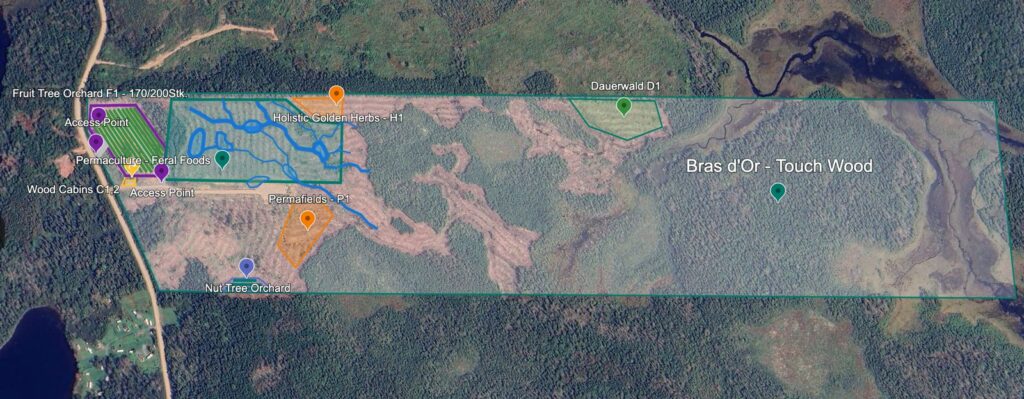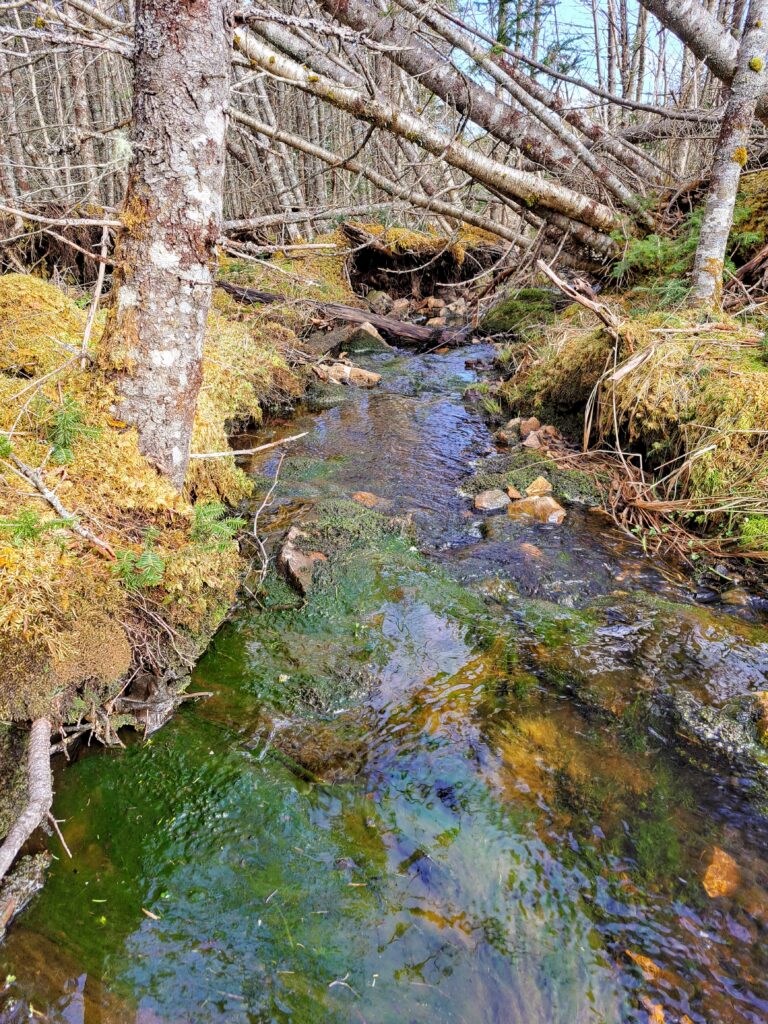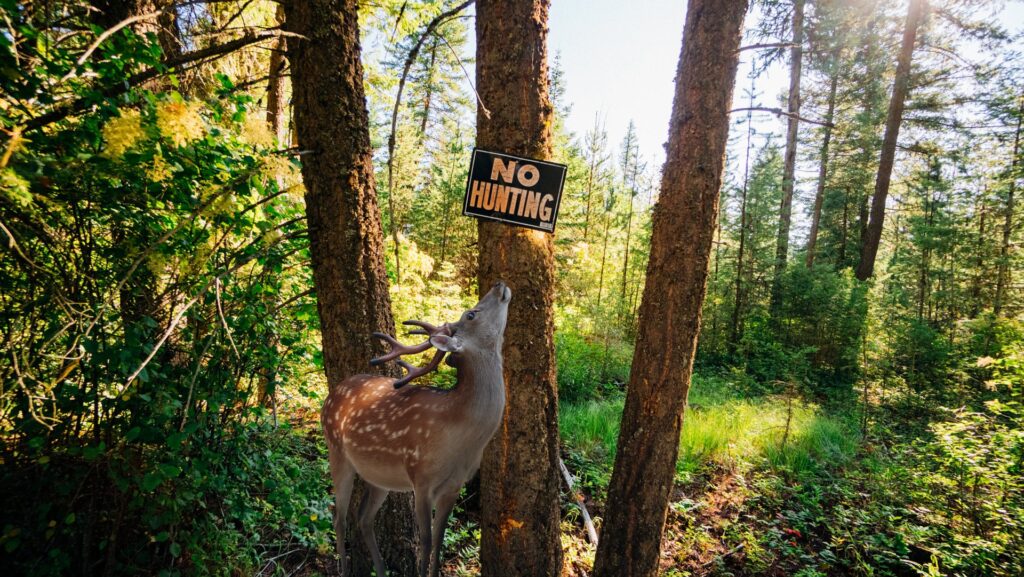If you dream of owning your own piece of land, whether to build a house, start a farm, or simply have a personal retreat in nature, finding the right plot is the first step on that journey. But how do you find the perfect piece of land that meets all your needs and goals? Here are some key considerations we made that may help you along the way.
What do I want to do with the land?
Before you even start searching for land, you should be clear about what you want to do with it. Do you want to build a house, run your own farm, start a business, or simply own a piece of nature to relax and enjoy? By clearly defining your goals and needs, you can narrow your search for the right plot of land.
In our case, we were looking for a property of at least 10 hectares, with no upper limit. You might wonder why we wanted this size? Well, we aim to:
- Build a purely plant-based permaculture,
- Have our own small forest area to produce our own firewood,
- Have enough space for, ideally, a natural stream or otherwise constructed ponds with watercourses,
- Have room for our house, barn, workshop, garage, and luxury buildings like a small sauna,
- Have even more space for parking spots for caravans for our family and friends, or even Tiny Homes for longer stays and holidays,
- Leave part of the property completely untouched, allowing nature to develop undisturbed.

What must a property have?
Another important aspect, which I briefly mentioned in the list above, is the availability of water. Check if the property has a reliable water source, such as lake access or a natural stream, or whether you can establish your own water supply, such as a well. A secure water supply is essential for many purposes and can greatly impact your possibilities.
In our case, we will need water in various forms for the establishment of permaculture: a pond as a habitat for important insects like dragonflies, a small watercourse to ensure that plants around are irrigated, a reservoir for general irrigation, and Gernot’s big wish—a swimming pond. Ideally, we will also manage to feed the greywater supply in the house from the available water.

Another crucial consideration is the soil quality of the property. Examine the soil to determine whether it’s suitable for your intended use. Depending on what you want to do with the land, soil quality can have a significant impact.
Personally, we had to compromise on soil quality. Cape Breton, the part of Canada we chose as our new future home, generally has rather barren, nutrient-poor soils with boreal coniferous forest, interspersed with large rock slabs. We were quite familiar with these conditions from our homeland, as they resemble the mid-altitude pastures of the Alps. So, we knew what kind of groundwork lay ahead.
Fortunately, since Gernot has been dealing with soil quality and improvement possibilities for some time, we see ways and means to compensate for these suboptimal conditions to achieve our goals.
External Conditions
The accessibility and approachability of the land is another key factor. Make sure the land is easy to reach, either via public roads or private access routes. Accessibility can have a significant impact on your quality of life, especially if you plan to live there permanently.
During our search for a property, we repeatedly came across plots that were completely surrounded by other private properties, with no legal access routes. This means, while the land is technically for sale, you couldn’t reach it (without a helicopter, zeppelin, or hot air balloon) unless the neighbors granted permanent access. This is a “worst-case scenario.”
It’s also important to clarify whether there are any third-party rights affecting the land, such as access or hunting rights. These could impact your plans or even lead to legal issues, so it’s essential to address them in advance.

It was particularly important to us that there were no hunting rights on our property, so I wouldn’t have to worry about our dog or even myself when walking through our forest during hunting season without a warning vest. We also looked out for mining rights, wood-use rights, etc., and luckily, we found a property completely free from third-party claims.
Before buying any property, it’s crucial to inform yourself about local building regulations and zoning laws. Check whether there are any restrictions on how the land can be used and whether your plans align with local rules. In Canada, this type of division is referred to as “zoning.”
We were quite surprised when we found out through our seller and further research that on the 70 hectares of land we discovered, the entire property, except for a small water area, is zoned for building. Additionally, the number of buildings that may be constructed can sometimes be limited. We were also able to confirm through local registration plans that we are permitted to conduct agricultural, livestock, and forestry activities on the land.
What has the property been used for?
Before purchasing land, it’s wise to check if there have been any past issues or problematic events. This could include anything from environmental pollution to previous legal disputes. You might want to inquire about past land uses or speak with local authorities to ensure there are no hidden problems that could hinder your plans. A thorough investigation of the property’s history can help avoid unpleasant surprises and ground your decision on a solid foundation.
Since we plan to provide our own food from the property, it was important to know that the soil had not been contaminated by conventional pesticide use or other things, such as hazardous waste dumping, that could ruin our plans. From what we could discover, our property has only been partially cleared about every 40 years; otherwise, it has been left untouched.
What’s happening around the property?
Get to know your potential neighbors and the surrounding community. The neighborhood can significantly impact your life, so it’s important to feel comfortable and have good relationships with those around you.
Finally, try to estimate how the area might develop in the future. Are there plans for new infrastructure, construction projects, or changes in urban planning? These factors could affect the future value of your property and should be considered in your decision.
We focused on ensuring our property was not next to livestock farms or conventional agriculture or any businesses and factories that could negatively impact organic farming. We also hope that nothing of that sort will be built nearby in the future.
Conclusion
By considering these important aspects and thoroughly researching, you can ensure that you find the perfect piece of land that meets all your needs and goals. The search for the right property takes time and patience, but with the right information and considerations, you can make the best possible decision.
We likely tested the patience of the sellers whose properties we were interested in, but for a decision of this magnitude, I prefer to ask too many questions than regret it later.
Here’s a quick overview of what was important to us:
- Appropriate size of the property (price per square meter ratio),
- Water,
- Accessibility,
- Rights and obligations,
- Soil quality,
- Neighborhood,
- Future developments.
Your Opinion?
What would you have considered when choosing a property, or which of our criteria do you find unreasonable? Share your thoughts and questions in the comments below and become part of our community on this exciting journey toward self-sufficiency and permaculture. Together, we can learn, grow, and make our dreams come true!
